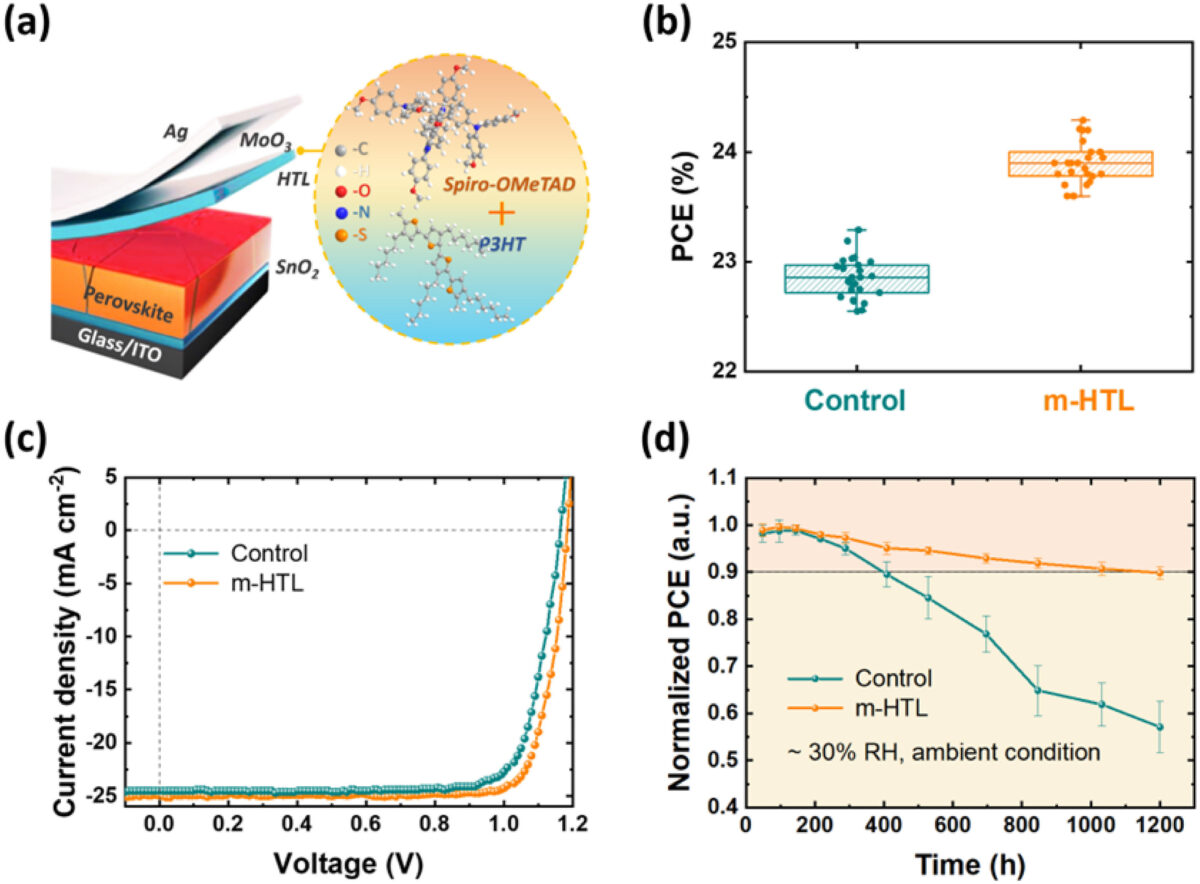A group of researchers led by the Chinese Academy of Sciences (CAS) has built a perovskite solar cell based on a binary mixed hole transport layer (HTL) that reportedly offers better performance than HTLs that rely on commonly utilized hygroscopic dopants.
“These dopants have been reported to impair device stability because of the hygroscopic nature and dopant-induced ion migration, which promotes perovskites degradation,” the scientists said.
They fabricated the HTL with the polymer Regioregular poly(3-hexylthiophene) (P3HT) and Spiro-OMeTAD in a mixed binary configuration, which they claim offers better protection to the perovskite absorber used in the cell thanks to the hydrophobicity of P3HT. “P3HT not only exhibits a higher degree of molecular order but also shows a preferential ‘face-on' orientation, i.e., the P3HT molecules are parallel to the substrate, which have significant positive effects on the opto-electronic properties and charge carrier mobility,” they explained.
The Chinese team built the solar cell with an indium tin oxide (ITO) substrate, a tin(IV) oxide (SnO2) electron transport layer (ETL), a perovskite layer, the proposed HTL, molybdenum oxide (MoOx) buffer layer, and a gold (Au) metal contact.
The academics tested the performance of several solar cells developed with this design and with an active area of 0.08 cm2 through a solar simulator equipped with a 450 W Xenon lamp and a Keithley 2400 source meter under standard illumination conditions.
Popular content
The champion device achieved a power conversion efficiency of 24.30% and a certified efficiency of 24.22%. It also achieved an open-circuit voltage of 1.18 V, a short-circuit current density of 24.94 mA cm-2, and a fill factor of 82.51%. The cell was also able to retain 90% of its initial efficiency after 1,200 hours of storage in dark ambient environment.
“A successful modification of the conventional Spiro-OMeTAD HTL has been demonstrated by incorporating hydrophobic polymeric P3HT into Spiro-OMeTAD film to improve the efficiency and stability of perovskite solar cells,” the group concluded. “We believe that this strategy will pave the way on the development of low-cost, efficient and stable perovskite solar cells.”
The scientists presented their findings in the study “Binary Hole Transport Layer Enables Stable Perovskite Solar Cells with PCE Exceeding 24%,” which was recently published in DeCarbon.
This content is protected by copyright and may not be reused. If you want to cooperate with us and would like to reuse some of our content, please contact: editors@pv-magazine.com.



I understand why efficiency retention characterisation under dark ambient conditions is a useful parameter, but why no measurement of such retention under simulated insolation?